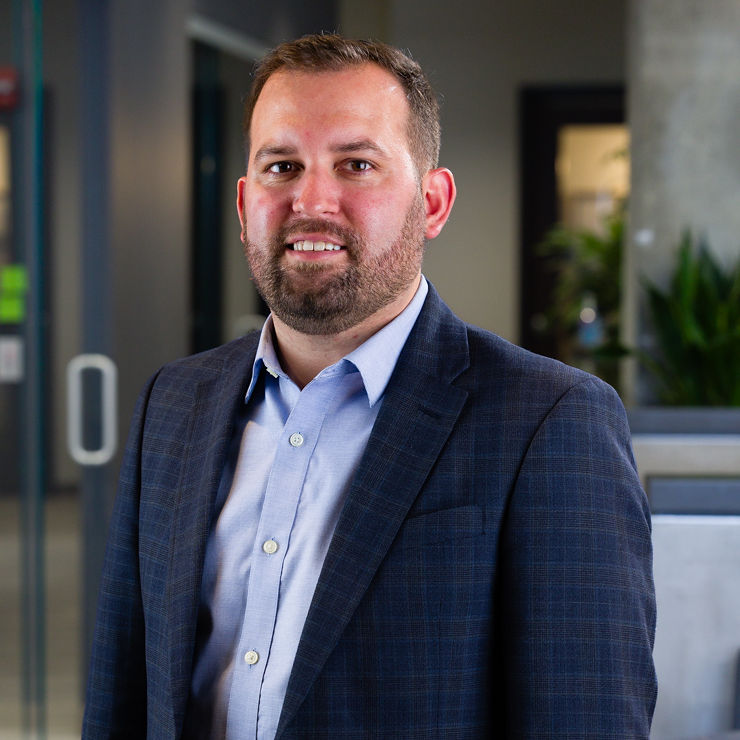A record number of nearly 1,100 attendees gathered in New Orleans for this year’s National Association of State Workforce Agencies (NASWA) annual summit, and some of our workforce team at Resultant were among the eager participants.
One of the highlights of the event was a panel in which Indiana Department of Workforce Development Chief of Staff Josh Richardson shared exciting details about Indiana’s new workforce empowerment tool, Pivot—Indiana’s custom implementation of Resultant’s Workforce Recommendation Engine.
Using AI to solve workforce dilemmas
Josh spoke about how Indiana faced the same workforce challenges many states grapple with today. In particular, they had good but fractured data belonging to numerous different state agencies that was difficult to pull together for analysis. That siloed data reflects the reality that so many different front doors exist for state services, often citizens don’t know where to go for assistance. Additionally, the state knew they had jobs available but experienced difficulty finding workers to fill them.
The Workforce Recommendation Engine, branded Pivot by Indiana Department of Workforce Development (DWD), first brings together disparate data systems—in Indiana’s case, DWD UI administrative records, Department of Education K-12 system records, and Commission for Higher Education post-secondary data were among their first concerns. It then trains an algorithm based on this data with the purpose of discerning what types of trainings and career moves have led to successful outcomes. The algorithm is applied to individual users’ data, comparing to others with similar characteristics to provide personalized career and training recommendations.
The speed and accuracy with which machine learning (ML) can identify relevant factors and patterns in outcomes far surpasses anything previously available and doesn’t require users to enter in any additional information or upload resumes. The objective is to help citizens return to work and increase their earning potential, and Workforce Recommendation Engine makes connections and illuminates paths that they may otherwise have no idea are available to them.
Meeting claimants where they are boosts engagement and outcomes
A key differentiator of Workforce Recommendation Engine is that it embeds within a state’s existing portal of choice and utilizes the profile data a user has already entered to provide recommendations. Users don’t have to provide any additional information, nor go to an entirely separate website to get recommendations. In Indiana, the custom Workforce Recommendation Engine implementation Pivot is built into their UI system, UpLink.
Not only is connecting rather than replacing existing systems cost effective, meeting claimants where they already are boosts engagement dramatically. Whereas previous DWD email campaign at best might achieve a 2% open rate, about 75% of UI claimants enter Pivot. When a claimant enters the UI portal as required to qualify for benefits, once opted in to Pivot, recommendations show up directly in their main interface.
Our team’s key takeaways from the 2024 NASWA summit
It’s energizing every year to attend NASWA and learn about the innovations happening in the workforce and unemployment insurance space. After years of challenges with COVID-19 and the backlogs and issues it created, it’s exciting to hear that agencies are actively investing in citizen-centric projects, including using data and technology to help navigate career and training pathways, modernizing unemployment systems, and understand shifting labor markets.
A topic I heard repeatedly was the importance of realigning services and facilitating data and systems interoperability. This is critical to creating seamless customer and employee experiences. It’s thrilling to hear about so many states purposefully connecting workforce and unemployment, not only through service delivery but with the data and technology that both streamlines and amplifies results. Initiatives like these are how we will increase the capacity of the public workforce system and produce better citizen outcomes leading to increased economic mobility and development.
Since several of the workforce team here attended the summit, we were able to sit in on most of the sessions and each of us had a unique perspective on what we learned. Here are some other team members’ main takeaways.
A key theme repeated throughout the NASWA summit was the growing adoption of AI across workforce agencies. Experts and practitioners identified a critical first step as ensuring an agency’s data is mature and of high quality—garbage data leads to garbage AI outcomes. Additionally, presentations emphasized the need for prioritizing strong governance and privacy measures.
– Alexa Myers, Senior Manager, WRE Technical Solution Owner
“This year’s NASWA summit was very encouraging with the largest attendance ever making for an incredible, energetic atmosphere.
While the field is still very much struggling with this “workforce problem,”—meaning the need to streamline and centralize scattered programming, tools, and resources for constituent accessibility—we finally saw great movement toward action and solutions. Tools like Pivot highlight that, as do central front door offerings and efforts.
I saw many varied approaches in the nuanced space of improving workforce outcomes (better wages, upskilling, etc.) with a broad spectrum of complex, serious solutions, from basic resume matching to investments in more in-person career counseling to highly complex data approaches.
And finally, the topic everyone buzzed about: AI. Like any buzzword of the day, the definitions around AI vary wildly. But one guiding voice came through: States want to feel some level (again, varying wildly) of preparedness before taking the AI step. It’s critical that things we’ve done with AI for years (ML, NLP, Evo Algos, Expert Systems) don’t get bundled into hesitancy around “AI.” Instead, leaders must understand the separation between those technologies and the realm of generative AI and LLM usage so they don’t inadvertently hinder innovation and progress.”
Josh Wakefield, SVP of Public Sector Services
One of my favorite quotes from NASWA came from a breakout session on data literacy: Data without context is not information. Throughout the conference, we repeatedly saw evidence of workforce and unemployment insurance professionals viewing data as a crucial asset for serving citizens. They also recognized the growing role of AI and ML in this field, emphasizing that now is the time to embrace these solutions, but stressing the importance of doing so with humans in the loop.
– Owen Boberg, Manager, WRE Senior Machine Learning Engineer
“Every conversation I had with summit attendees centered on adapting to new realities or finding innovative ways to tackle new challenges, with the majority focused on using data and information to solve complex workforce, talent, and economic development problems. Each individual faces unique, region- or state-specific challenges, but everyone understands that data can help drive and solve solutions that enable workforce customers to prosper.
I left the summit feeling that the workforce community is among the most innovative, forward-thinking public sector grouping of individuals, and will take a leading role in advancing government services into the technology and data-driven era.”
Chad Timmerman, Senior Consultant, Workforce Development
The progress we’ve collectively achieved in only a year’s time amazes me. Kudos to all the innovators creating great outcomes in their states. I believe we can attribute this rapid advancement to a few different things, but most fundamentally is this group’s embrace of human-centered approaches. These techniques help us all reframe our work through the following lens: Our “customers” are our community and we’re here to help them thrive.
– Ian Gunn, Unemployment Insurance SME
“Connecting with colleagues from state workforce departments is invaluable. Presenters throughout the summit strongly emphasized leveraging data to drive decision-making and improve workforce outcomes. Many sessions focused on data literacy, AI adoption, and the importance of ethical considerations in AI implementation.
I was particularly encouraged by the interest in our Workforce Recommendation Engine and UI plain language offerings and seeing our executive sponsor, Josh Richardson from Indiana DWD, present our Pivot tool to the entire conference was a proud moment.”
Zak Aker, Senior Consultant, Workforce Development
The number of decision makers from various state workforce departments who visited our booth and expressed immense interest in our Workforce Recommendation Engine was heartening. Knowing that we have a strategic data offering that can contribute to the solution of many of these workforce challenges and resonates with plenty of these leaders further confirms they believe that human-centered technology can help change the lives of citizens for the better.
– Kyle Cook, Business Development Executive
We’d love to talk to you about how Workforce Recommendation Engine can help your state bring about better outcomes for citizens.

Michael Schmierer
Director, Workforce and Economic Development Practice @ Resultant




